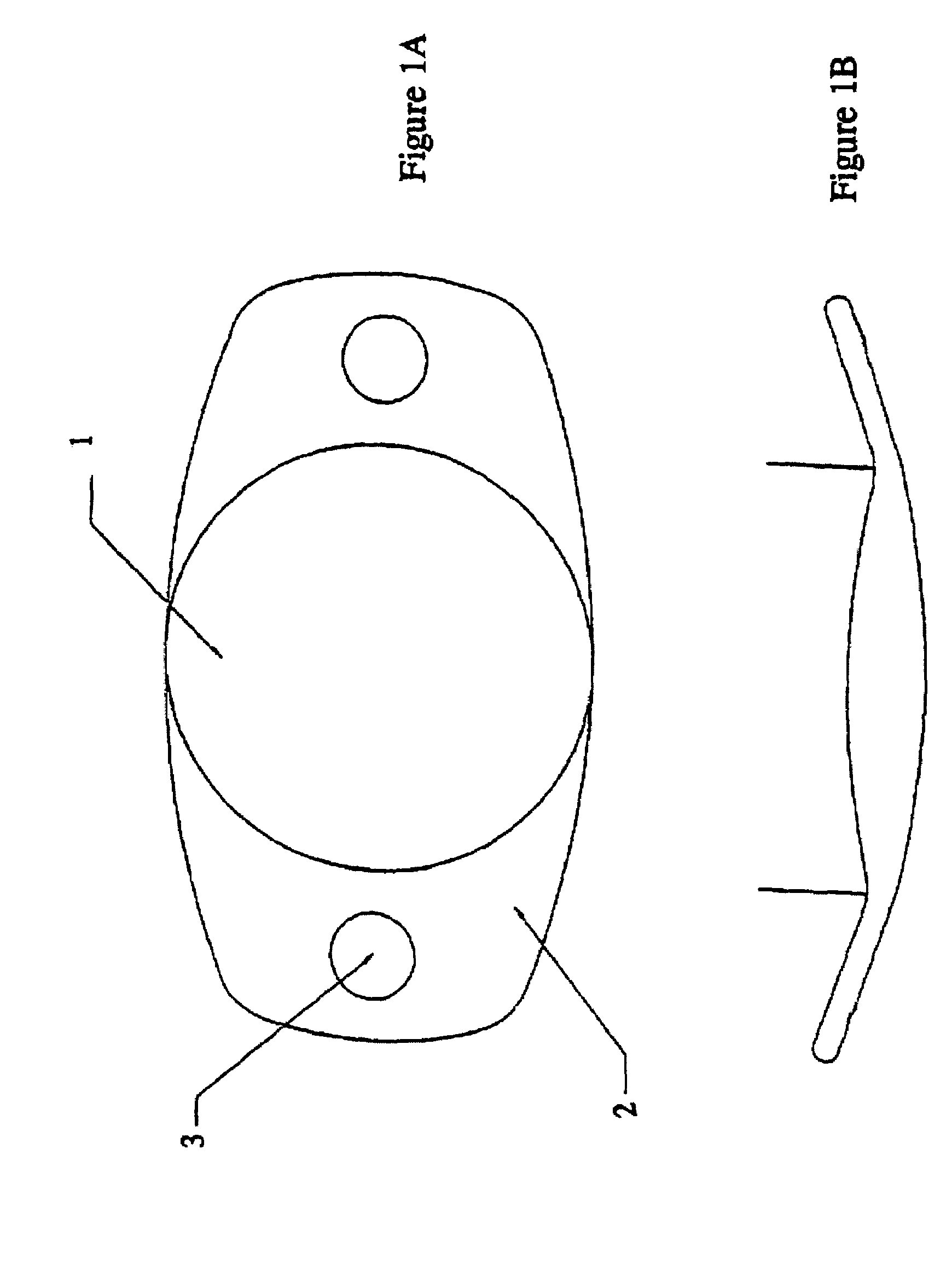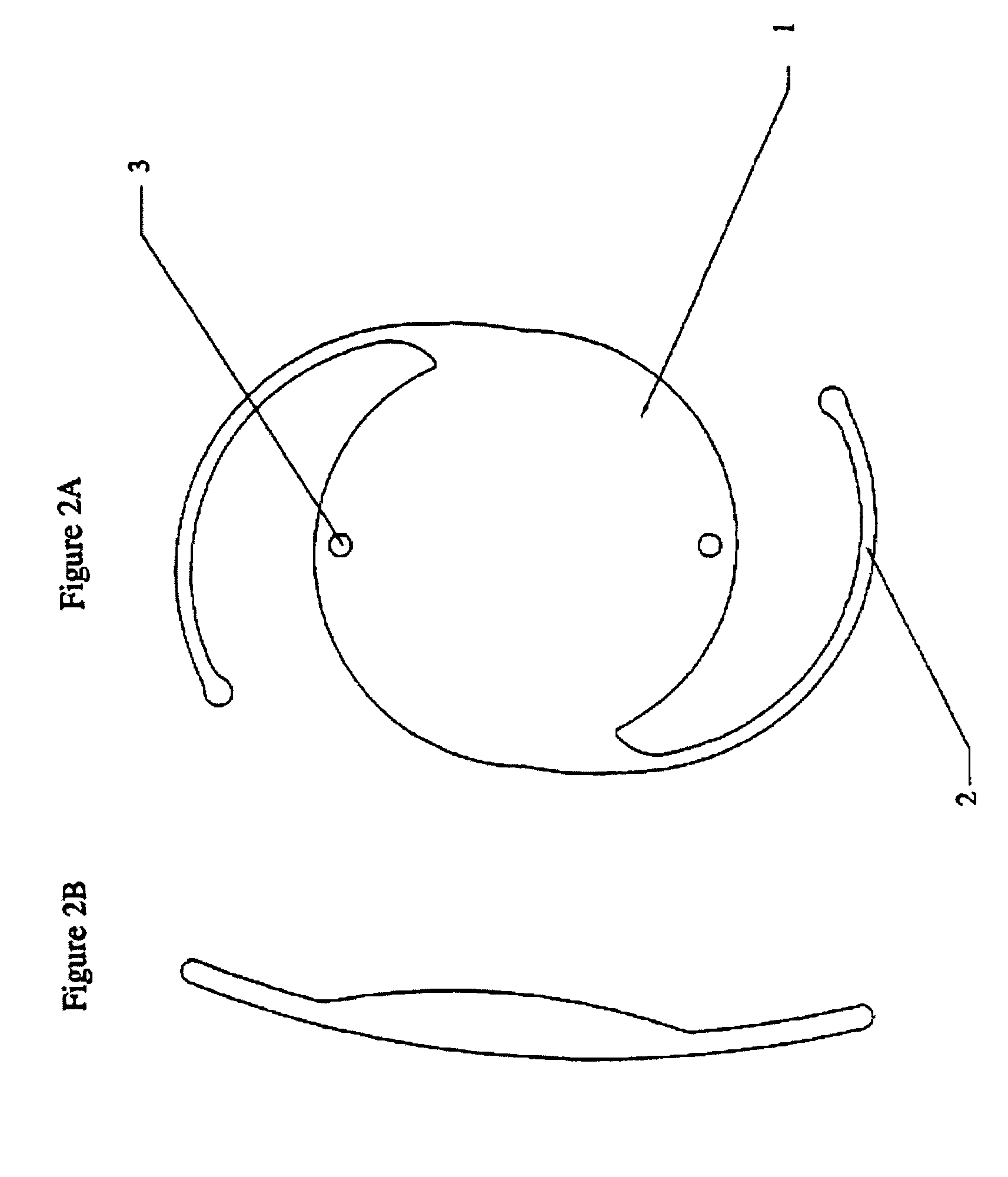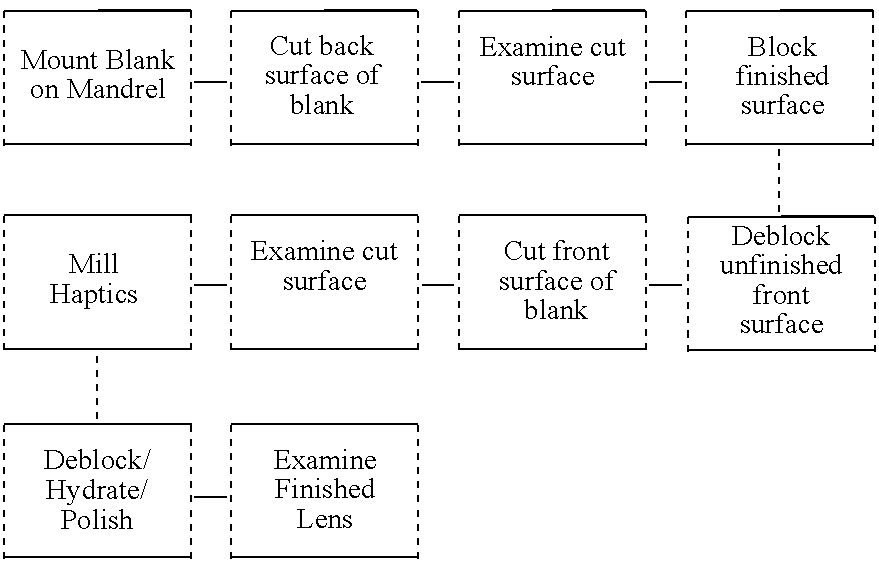Materials for making hydrophobic intraocular lens
a technology of hydrophobic and intraocular lens, which is applied in the field of copolymer materials, can solve the problems of difficult surgery to properly position the lens in the eye, difficult to fold easily, and large incision for insertion, so as to improve the ability of the eye to adjust, correct or modify the individual's eyesight
- Summary
- Abstract
- Description
- Claims
- Application Information
AI Technical Summary
Problems solved by technology
Method used
Image
Examples
example 1
[0082]475 grams of ethoxyethyl methacrylate (EOEMA) were mixed with 25 grams of ethoxyethoxyethyl acrylate (EEEA), 2.506 grams of trimethylol propane trimethacrylate (TMPTMA) and 0.656 grams of ethylene glycol dimethacrylate (EGDMA) without solvent. The mixture was degassed while applying vigorous stirring. The mixture was dispensed into cylindrical molds, polymerized at 30° C. for 10 hours, and post-cured at 100° C. for 5 hours. The copolymer was then removed from the molds and formed into blanks. The mechanical formation process comprised cutting the polymer into cylinders of 0.5 to 0.65 inches (1.27 to 1.65 cm.) in diameter and 0.1 to 0.2 inches (0.25 to 0.51 cm.) in thickness. The blanks were further cured at 100° C. for 5 hours. After curing, the blanks were ground to the desired dimensions.
example 2
[0083]141.1 grams of EOEMA were mixed with 114.1 grams of lauryl methacrylate (LME), 45 grams of methyl methacrylate (MME), 1.51 grams of TMPTMA and 0.3975 grams of ethylene glycol dimethacrylate (EGDMA). The mixture was degassed while applying vigorous stirring. The mixture was dispensed into cylindrical molds, polymerized at 30° C. for 10 hours, and post-cured at 100° C. for 5 hours. The copolymer was then removed from the molds and formed into blanks. The mechanical formation process comprised cutting the polymer into cylinders of 0.5 to 0.65 inches (1.27 to 1.65 cm.) in diameter and 0.1 to 0.2 inches (0.25 to 0.51 cm.) in thickness. The blanks were further cured at 100° C. for 5 hours. After curing, the blanks were ground to the desired dimensions.
example 3
[0084]224.9 grams of EOEMA were mixed with 25 grams of EEEA, 1.8942 grams of TMPTMA and 0.4836 grams of ethylene glycol dimethacrylate (EGDMA). The mixture was degassed while applying vigorous stirring. The mixture was dispensed into cylindrical molds, polymerized at 30° C. for 10 hours, and post-cured at 100° C. for 5 hours. The copolymer was then removed from the molds and formed into blanks. The mechanical formation process comprised cutting the polymer into cylinders of 0.5 to 0.65 inches (1.27 to 1.65 cm.) in diameter and 0.1 to 0.2 inches (0.25 to 0.51 cm.) in thickness. The blanks were further cured at 100° C. for 5 hours. After curing, the blanks were ground to the desired dimensions.
PUM
| Property | Measurement | Unit |
|---|---|---|
| equilibrium water content | aaaaa | aaaaa |
| glass transition temperature | aaaaa | aaaaa |
| glass transition temperature | aaaaa | aaaaa |
Abstract
Description
Claims
Application Information
 Login to View More
Login to View More - R&D
- Intellectual Property
- Life Sciences
- Materials
- Tech Scout
- Unparalleled Data Quality
- Higher Quality Content
- 60% Fewer Hallucinations
Browse by: Latest US Patents, China's latest patents, Technical Efficacy Thesaurus, Application Domain, Technology Topic, Popular Technical Reports.
© 2025 PatSnap. All rights reserved.Legal|Privacy policy|Modern Slavery Act Transparency Statement|Sitemap|About US| Contact US: help@patsnap.com



